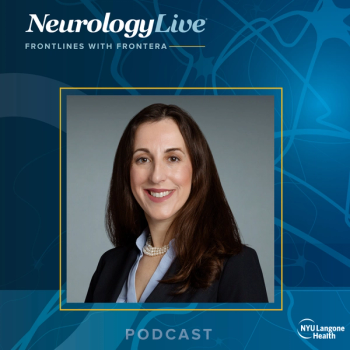
Guiding SMA Therapy in Older Patients: Practical and Personal Factors

Panelists comment on how treatment decisions for adolescents and adults with SMA are shaped by lifestyle, quality of life, logistical realities, and access to care.
Episodes in this series

Spinal muscular atrophy (SMA) is an autosomal recessive disorder caused by mutations in both copies of the SMN1 gene on chromosome 5q, occurring in about 1 in 15,000 live births. In the U.S., carrier rates vary by ethnicity, from 1 in 47 among White individuals to 1 in 72 among African Americans, with detection rates of 94.8% and 70.5%, respectively. SMA leads to the dysfunction and irreversible loss of alpha motor neurons in the spinal cord and brainstem, resulting in progressive muscle weakness and atrophy.
Earlier this year, Cure SMA, an advocacy group dedicated to advancing the care of patients with SMA, put out a new best practices guideline on decision-making between healthcare providers (HCP) and patients and caregivers in North American and Western Europe. To better translate the latest updates, NeurologyLive® convened study authors Diana Bharucha-Goebel, MD, a clinical neurophysiologist at Children’s National, and Bakri Elsheikh, MBBS, FRCP, a professor of neurology at The Ohio State University Wexner Medical Center.
In episode 5, Bharucha-Goebel and Elsheikh discuss the multifactorial decision-making process involved in treating adolescents and adults with SMA. They highlight the importance of aligning therapy with patient goals, lifestyle, and preferences, particularly when weighing factors like treatment burden, logistics, and long-term planning. The conversation also touches on barriers such as insurance limitations and transitioning care during major life changes like college, underscoring the need for flexibility and personalized treatment plans in this patient population.
Transcript edited for clarity. To visit the 2025 Cure SMA Update in Best Practices,
Marco Meglio: This next question focuses more specifically on adolescents and adults with SMA. What factors guide treatment decision-making in this group, particularly when determining which therapy may be most appropriate?
Bakri Elsheikh, MBBS, FRCP: In general, I’d say adult clinics often have it a little easier, because most of our patients are very well informed and have a strong sense of what works best for them. Two things tend to come up most often: quality of life and functional independence, and the burden versus benefit of treatment.
There’s the financial burden of needing time off work for appointments, the logistical burden on family members for transportation, and the emotional toll that can come with treatment expectations. Our healthcare provider working group—18 members from Europe and the U.S.—outlined nine key discussion points for clinic visits with patients. These include reproductive concerns, progression of symptoms despite treatment, and aligning treatment with each patient’s personal goals, lifestyle, and level of commitment. Setting a clear game plan from the outset is essential.
Diana Bharucha-Goebel, MD: Yes, and just to give a few examples—some patients might prefer intrathecal administration over daily oral medication. For them, getting treated every four months might be easier to manage, especially if they’re traveling or have a busy lifestyle. But others, especially teens or college-age patients, might find the day of treatment disruptive—missing school, dealing with post-lumbar puncture headaches, etc.
So we have to think about how treatment fits into their lives. Does it cause them to miss work or school? Is one method better tolerated than another? As Bakri said, we’re not just looking at the benefit of the medication, but also the impact of taking it—the treatment burden. The goal is to improve quality of life without creating too much disruption.
Bakri Elsheikh, MBBS, FRCP: Another major consideration is real-world challenges. One big barrier the group identified is access—insurance or payer restrictions can limit which therapies are available. In some countries, national guidelines determine which patients can receive which medications. So sometimes it’s not just about the best medical fit, but also what’s realistically accessible.
Diana Bharucha-Goebel, MD: Absolutely. For adolescents transitioning to college, these issues really come up. If they’re on intrathecal therapy, we need to ask—will they be near a dosing center? Will they travel home for treatments, or get them locally? Sometimes families are happy with the current medication and don’t want to change, but we still need to support them with logistical planning. It’s about helping these young people enter the next stage of life with continuity of care, even if the care plan itself needs some adjustment.
Newsletter
Keep your finger on the pulse of neurology—subscribe to NeurologyLive for expert interviews, new data, and breakthrough treatment updates.





















